Pitch perfect: MAD reveal the Harbin Opera House’s sweeping curves
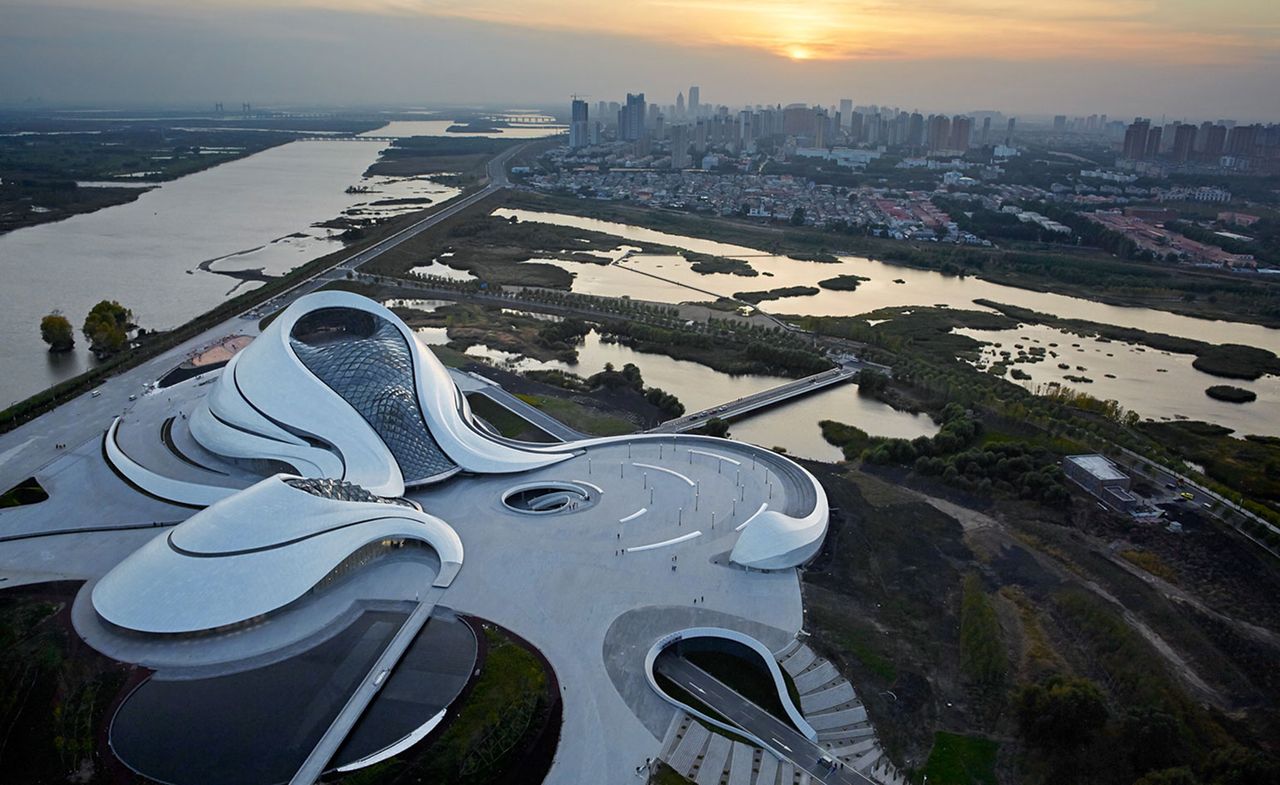
Until the opening of its extraordinarily sinuous opera house, Harbin, in China's remote and cold north-east provinces, has been mostly known for its annual blow-out ice-sculpture festival. However, the Beijing-based MAD Architects have pushed China's eighth most populous city to the top of the country's cultural league-table with a defiant flourish.
Just a decade ago, a building like the Harbin Opera House could not have been made. But a combination of technological and engineering leaps, computer wizardry and fearless deep-pocketed clients has meant that now, for the first time, architects are able to give free-rein to their wildest imaginations.
Set within the wetlands of the Harbin Cultural Island – an arts hub that, when fully open, will also include a cultural centre – MAD's 829,000 sq ft project is anchored by a curlicue comprising a grand theatre that seats 1,600, and a smaller theatre for 400.
Clad entirely in white aluminium panels, the opera house swoops and curls against the bleak landscape, at times resembling a thundering snow-drift and, at others, a hyper-stylised tented yurt. The primal references are deliberate, a not entirely subtle nod to the region's harsh climate and wild topography.
The grand interiors are equally breathtaking. Vast volumes are cut out of gigantic curving glass windows, acres of polished stone floors, and enormous timber-clad walls that dip and rise and bend like canyons. You can't help but think the heating bill will be impressive.
The naturalist swooping lines continue in the grand theatre where an organically ribbed cocoon of Manchurian ash wraps concert-goers in a warm aural lushness. Ma Yansong, MAD's founder and the project's team leader, likens the space to a wooden block that has been gently eroded by time and the elements.
The opera house, Ma adds, is 'a dramatic public space that embodies the integration of humans, art and the city's identity while synergistically blending with the surrounding nature.' Cue the maestro.
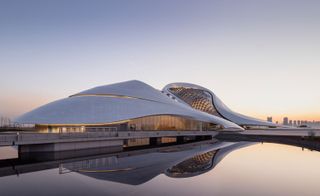
Sitting in the country's fairly remote and cold north-east provinces, the curvaceous opera house is set within the wetlands of the Harbin Cultural Island
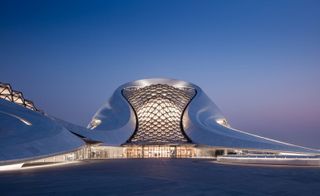
Clad entirely in white aluminium panels, the futuristic opera house swoops and curls, standing out against its context.
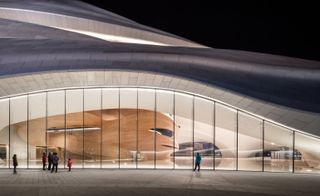
Shinning like a beacon at night, the building reveals equally breath taking, curvy interiors.
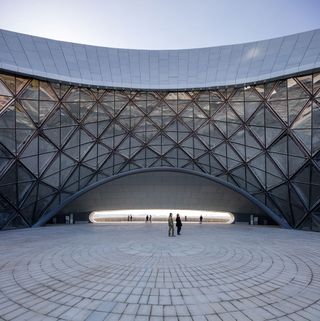
The structure's meandering form creates lots of open areas and public spaces.
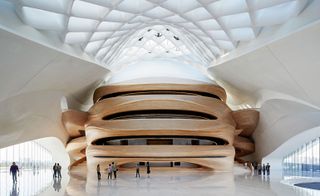
Inside, generous volumes are cut out of gigantic curving glass windows, acres of polished stone floors, and enormous timber-clad walls that dip and rise and bend like canyons.
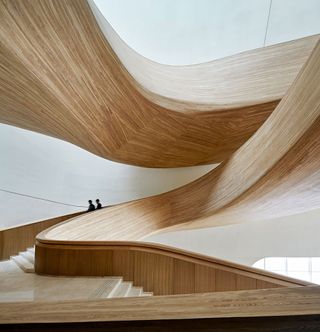
A spiraling staircase made of curved woods creates a sculptural addition for the interior.
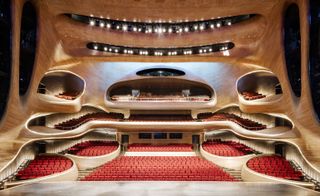
The 829,000 sq ft project is anchored by a curlicue comprising a grand theatre that seats 1,600, and a smaller theatre for 400.
Wallpaper* Newsletter
Receive our daily digest of inspiration, escapism and design stories from around the world direct to your inbox.
INFORMATION
For more information on MAD visit the website
Daven Wu is the Singapore Editor at Wallpaper*. A former corporate lawyer, he has been covering Singapore and the neighbouring South-East Asian region since 1999, writing extensively about architecture, design, and travel for both the magazine and website. He is also the City Editor for the Phaidon Wallpaper* City Guide to Singapore.
-
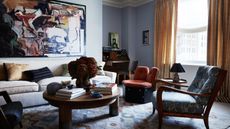 Step inside this Upper East Side jewel box apartment
Step inside this Upper East Side jewel box apartmentThis radiant Lexington Avenue home is a harbinger of good things for the Upper East Side, and the latest focus of The Inside Story, our series spotlighting intriguing and innovative interior design
By Anna Solomon Published
-
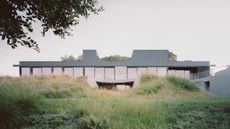 A new hilltop California home is rooted in the landscape and celebrates views of nature
A new hilltop California home is rooted in the landscape and celebrates views of natureWOJR's California home House of Horns is a meticulously planned modern villa that seeps into its surrounding landscape through a series of sculptural courtyards
By Jonathan Bell Published
-
 Is a tiny tattoo the best holiday souvenir? Kimpton Hotels think so
Is a tiny tattoo the best holiday souvenir? Kimpton Hotels think soIn partnership with Tiny Zaps, Kimpton Hotels is bringing city-inspired tattoo pop-ups to five U.S. locations
By Sofia de la Cruz Published
-
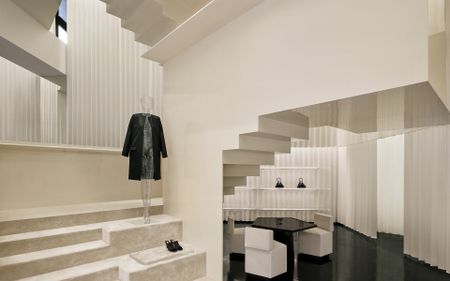 Bold, geometric minimalism rules at Toteme’s new store by Herzog & de Meuron in China
Bold, geometric minimalism rules at Toteme’s new store by Herzog & de Meuron in ChinaToteme launches a bold, monochromatic new store in Beijing – the brand’s first in China – created by Swiss architecture masters Herzog & de Meuron
By Ellie Stathaki Published
-
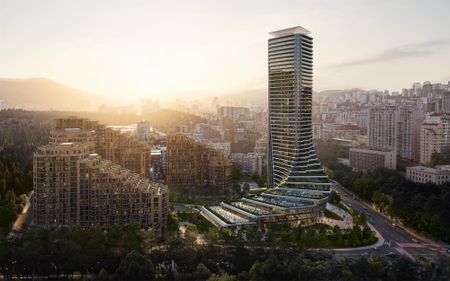 The upcoming Zaha Hadid Architects projects set to transform the horizon
The upcoming Zaha Hadid Architects projects set to transform the horizonA peek at Zaha Hadid Architects’ future projects, which will comprise some of the most innovative and intriguing structures in the world
By Anna Solomon Published
-
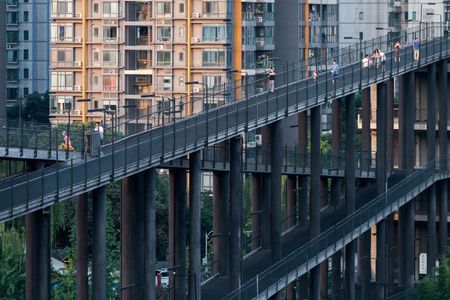 Liu Jiakun wins 2025 Pritzker Architecture Prize: explore the Chinese architect's work
Liu Jiakun wins 2025 Pritzker Architecture Prize: explore the Chinese architect's workLiu Jiakun, 2025 Pritzker Architecture Prize Laureate, is celebrated for his 'deep coherence', quality and transcendent architecture
By Ellie Stathaki Published
-
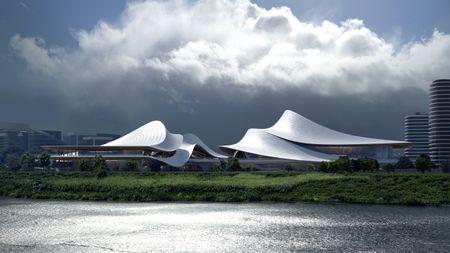 Zaha Hadid Architects reveals plans for a futuristic project in Shaoxing, China
Zaha Hadid Architects reveals plans for a futuristic project in Shaoxing, ChinaThe cultural and arts centre looks breathtakingly modern, but takes cues from the ancient history of Shaoxing
By Anna Solomon Published
-
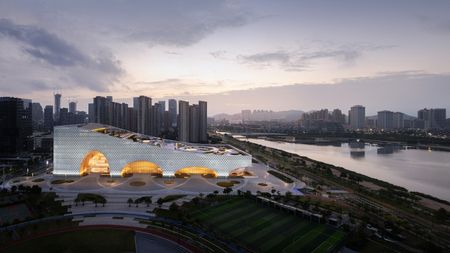 The Hengqin Culture and Art Complex is China’s newest cultural megastructure
The Hengqin Culture and Art Complex is China’s newest cultural megastructureAtelier Apeiron’s Hengqin Culture and Art Complex strides across its waterside site on vast arches, bringing a host of facilities and public spaces to one of China’s most rapidly urbanising areas
By Jonathan Bell Published
-
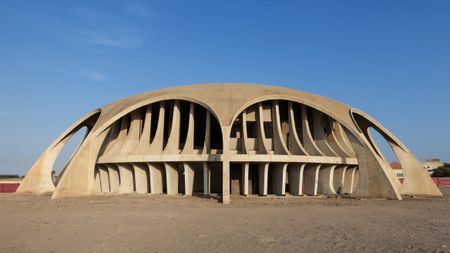 The World Monuments Fund has announced its 2025 Watch – here are some of the endangered sites on the list
The World Monuments Fund has announced its 2025 Watch – here are some of the endangered sites on the listEvery two years, the World Monuments Fund creates a list of 25 monuments of global significance deemed most in need of restoration. From a modernist icon in Angola to the cultural wreckage of Gaza, these are the heritage sites highlighted
By Anna Solomon Published
-
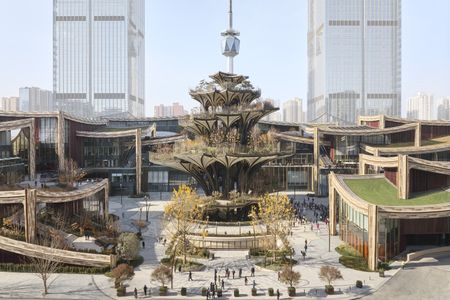 Tour Xi'an's remarkable new 'human-centred' shopping district with designer Thomas Heatherwick
Tour Xi'an's remarkable new 'human-centred' shopping district with designer Thomas HeatherwickXi'an district by Heatherwick Studio, a 115,000 sq m retail development in the Chinese city, opens this winter. Thomas Heatherwick talks us through its making and ambition
By David Plaisant Published
-
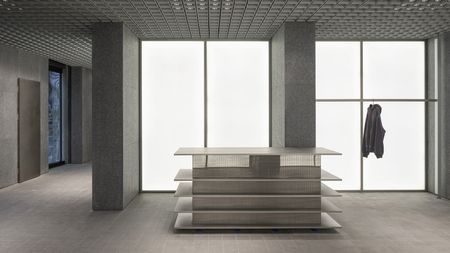 Raw, refined and dynamic: A-Cold-Wall*’s new Shanghai store is a fresh take on the industrial look
Raw, refined and dynamic: A-Cold-Wall*’s new Shanghai store is a fresh take on the industrial lookA-Cold-Wall* has a new flagship store in Shanghai, designed by architecture practice Hesselbrand to highlight positive spatial and material tensions
By Tianna Williams Published